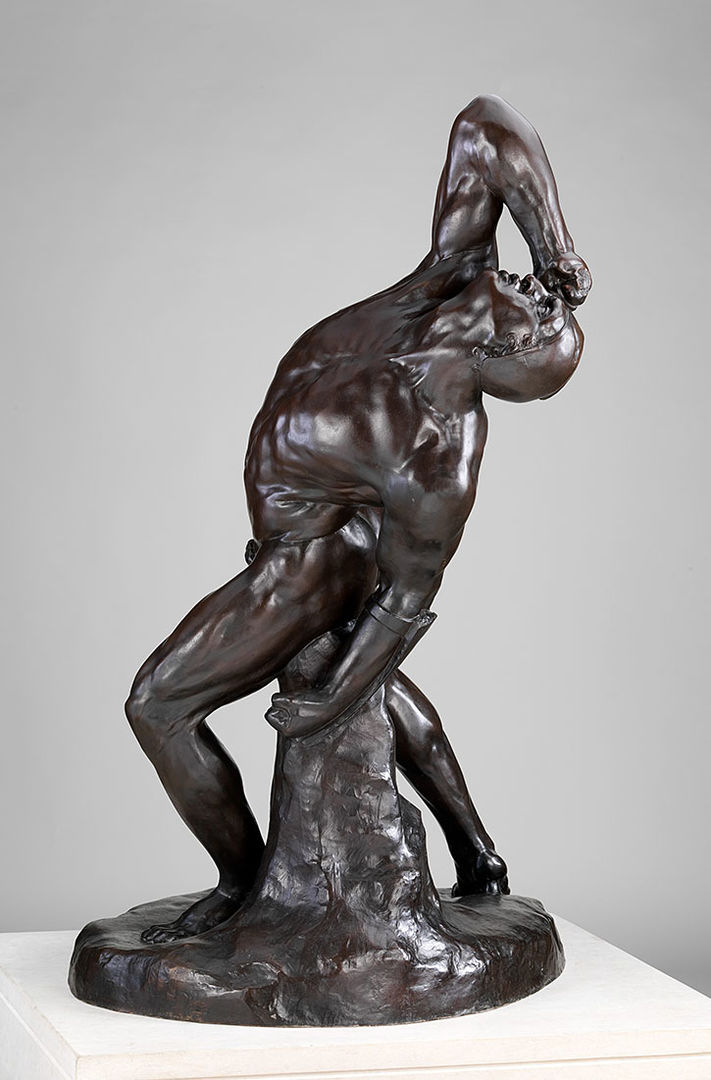The Falling Gladiator

William Rimmer (American [born England], 1816–1879). The Falling Gladiator, 1907. Bronze. The Metropolitan Museum of Art, New York, Purchase, Rogers Fund, 1907 (07.224).
In this work, Rimmer conveys the wounded warrior’s physical stress by accentuating his rippling skin and the taut, straining muscles beneath. The tension between the raised arm and the dramatic, collapsing posture enhances the sculpture's emotional intensity and reflects the artist's fascination with figures that rise and fall simultaneously, projecting both heroism and defeat. Rimmer was a practicing physician with a superb command of anatomy. He turned to sculpture in the late 1850s, eventually abandoning his medical practice to head a successful art school.
"It's almost hard to believe that this figure will die; his physique is so strong, so muscular."
—Thayer Tolles, curator
"You can't help but try to see what it might feel like to be contorted into this position."
—Edward Vessel, neuroscientist
"Unlike many sculptors of his time, Rimmer did not rely on a live model."
—Thayer Tolles, curator
All voices: Thayer Tolles, curator; Kyle Abraham, dancer; Edward Vessel, neuroscientist
Transcript: Between Life and Death (Video)